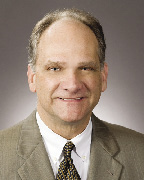The following discusses the impact of healthcare reform on the job force, with much of the information obtained from The New England Journal of Medicine.
In 2006, Massachusetts enacted legislation to provide universal health insurance coverage that later served as a model for the national health care reform legislation passed in 2010. Phased in during 2007, the Massachusetts Health Care Reform Plan offered insurance subsidies for low-income individuals, expanded Medicaid coverage, and created an individual mandate to obtain insurance, pay-or-play requirements for employers, and a state insurance exchange through which many of the newly insured Massachusetts residents obtained coverage. Since implementing these provisions, Massachusetts has achieved near-universal insurance coverage but has also seen continuing growth in health insurance premiums, a net increase in state spending on health care, and growing political pressures to control cost growth.
The Massachusetts reform experience has been watched closely for indications of what might occur throughout the country as national health care reform is implemented under the Accountable Care Act (ACA). One aspect of the Massachusetts experience that has remained unexplored is the impact on the health care workforce, particularly the question of whether greater numbers of health care professionals or support personnel were needed to ensure the success of the reform in increasing access to care. If successful reform requires a larger health care workforce, then implementation of the ACA may increase health care costs and exacerbate expected shortages of physicians and registered nurses.
Since Massachusetts enacted the Health Care Reform Plan in early 2006, total health care employment per capita in the state has grown more rapidly than that in the rest of the country. From January 2001 to December 2005, employment per capita grew by just over 8% in both Massachusetts and rest of the country. Subsequently, health care employment grew faster in Massachusetts, increasing by 9.5% from December 2005 through September 2010, while the rate of growth in the rest of the country was 5.5%. Most of the divergence in employment growth between Massachusetts and the rest of the country occurred in 2006 and 2007, when the Massachusetts reforms were being phased in. Had health care employment in Massachusetts grown at the same rate as in the rest of the country, 18,000 fewer people would have been employed in health care by 2010.
Most of the difference in health care employment growth occurred in administrative occupations. From 2005-2006 to 2008-2009, employment per capita in administrative occupations grew by 18.4% in Massachusetts, as compared with 8% in the rest of the country. These administrative occupations include management, business and financial operations, and office and administrative support. In contrast, employment levels in non-administrative positions in Massachusetts increased by 9.3% after health care reform, an increase similar to that of 8.6% in the rest of the United States. Workers in this category include physicians and nurses, whose combined employment level increased by only 2.8% in Massachusetts, and people who provide patient care support, such as therapists, technicians, and aides, whose combined employment level increased by 18% in Massachusetts.
These data suggest that enactment of reform in Massachusetts was associated with more rapid growth in health care employment, primarily in administrative occupations and (perhaps) patient care support occupations rather than among physicians and nurses. It is possible that these employment trends are partially attributable to other changes in Massachusetts coinciding with health care reform, such as an increased intensity of utilization management reported during this period that was not necessarily related to the state's reform. It is not surprising to see an increase in health care employment, particularly in occupations to which people can shift rapidly with brief training time, given that an estimated 400,000 people had gained insurance coverage by the end of 2008. It is plausible that additional employees were required to manage the care of the new enrollees, process applications, file insurance claims, submit information to comply with regulatory requirements, and carry out other administrative functions.
It is uncertain whether the experience of the Massachusetts health care reform provides an accurate indication of how the health care workforce in other states might be affected as the ACA is implemented. For one thing, Massachusetts was unlike many states in that before adopting its plan, it had a low proportion of uninsured residents, a highly regulated insurance market, and an uncompensated care pool. Also, the numbers of physicians and nurses per capita in Massachusetts were already among the highest in the country, and this workforce may have facilitated absorption of large numbers of newly insured people without compromising access. Finally, the increase in insurance coverage resulting from the ACA will be coupled with cost-control provisions.
The establishment of the Independent Payment Advisory Board and reductions in Medicare's payments to hospitals and to its Advantage plans — provisions that would ultimately be expected to constrain workforce growth more than was the case in Massachusetts.
The Massachusetts experience provides lessons for national health care reform. Reform may accelerate the trend toward health care being the dominant employment sector in the economy. Rather than requiring greater numbers of physicians and nurses, reform may require larger numbers of people supporting the work of such health care professionals.
Michael Bertrand, MAI is vice president of CBRE Valuation & Advisory Services-South Central Region, New Orleans, LA.
Tags:
2012 healthcare spring preview: Impact of healthcare reform on the job force
March 28, 2012 - Spotlights









